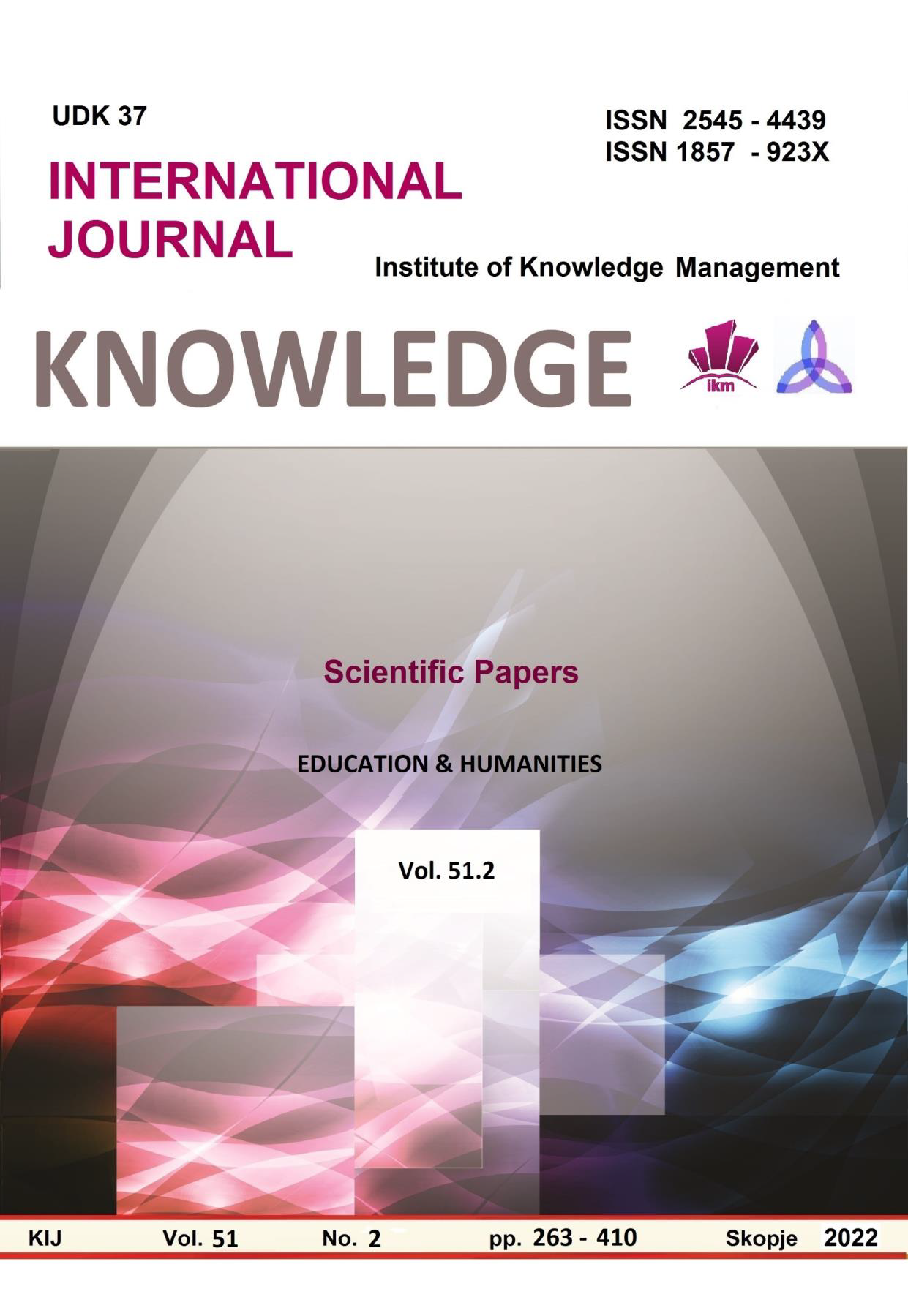APPLICATION OF DIGITAL TECHNOLOGIES IN ENGLISH LANGUAGE TEACHING
Keywords:
digital technologies, English language, teaching, Moodle, video clips, moviesAbstract
The digital era is a creator of learning modern English language from the youngest population to the three cycles of the higher education system. Internet connections and technological innovations transformed into modern tools such as computers, tablets, smartphones, smartwatches upgraded with modern platforms such as Moodle, Blackboard, etc., are not only a necessity but also an obligation of every individual and institution for advanced and modern learning of English Language. The introduction of professional platforms in the teaching of English at particular universities is a need to keep up the step with the progressive European countries. At the universities in the Republic Northern Macedonia there is a trend for the use of modern technology in learning English, including several system platforms such as Moodle, Google Classroom etc. Results of our study have shown that most of the teachers or 50% (10 teachers) reported that they did not use open-source platforms at their faculties while a larger group of teachers or 40% (8 teachers) reported using the Open Access Moodle platform, while 10% (2 teachers) said they used the Google Classroom for the requirements of English language teaching. The application of filmed stories and video clips is a very common technology used in learning English at universities from teachers and students. Our study resulted that the respondents were divided into two groups, those that regularly use movies, video clips and other types of film materials in English language teaching 55% (11 teachers), while in the second group were classified teachers that occasionally use such resources with 45% (9 teachers)
References
Ahmadi, R. M. (2018). The Use of Technology in English Language Learning: A Literature Review. Ahmadi International Journal of Research in English Education, Vol. 3, No. 2, pp. 115-125.
Al-Tamimi, N. O. M. (2014). Public speaking instruction: abridge to improve English speaking competence and reducing communication apprehension. International Journal of Linguistics and Communication, 2(4), 45–68. doi.org/10.15640/ijlc.v2n4a4.
Diniz, P. B., & Levay, J. B. (2016). Evaluating the use of Digital stories in the teaching and learning of English. 8th EuroAmerican Conference on telematics and Information systems (EATIS), Cartagena, Conference proceedings, pp 1-5.
Ghada, I. (2014). Using and iPad in language learning: perception college students -Theses and Dissertations. Digital Initiatives.
Habeeb, H. M. (2020). Technology in education: the use of relevant instructional technologies to improve teaching and learning english as a foreign language: the case of Sumaiyah Preparatory school in Anbar Province. Journal of critical reviews, Vol 7, Issue 15, pp 5377-5383.
Knežević, Ž. (2017). Savremeni trendovi u nastavi I učenju engleskog jezika kao jezika struke u oblasti informacionih tehnologija. Doktosrka disertacija, Filološki fakultet, Univerzitet u Beogradu, 188.
Masruddin, S. P. (2014). The importance of using technology in English teaching and learning. IDEAS: Journal on English Language Teaching and Learning, Linguistics and Literature, [S.l.], v. 2, n. 2, ISSN 2548-4192.
Mofareh, A. A. (2019). The Use of Technology in English Language Teaching. Frontiers in Education Technology, Vol. 2, No. 3. ISSN 2576-1846 (Print) ISSN 2576-1854 (Online)
Nishina, Y. (2009). A Lexical Study Based on Parallel Corpora, DDL, and Moodle. U R. d. Marriott, & P. L. Torres (Eds), Handbook of Research on E-Learning Methodologies for Language Acquisition Hershey/New York: Information Science Reference (pp. 204-218).
Nomass, B. B. (2013). The Impact of Using Technology in Teaching English. English Language and Literature Studies, pp 111-116.
Recanoski, S., Serafimovska, S., & Serafimovski, D. (2021). Proposed model for better english language acquisition, based on wearable devices. ETIMA, 1(1), 123-131.
Shrosbree, M. (2008). Digital Video in Language Learning. The JALT CALL Journal, 4 (1), 75-84.
Sokolik, M. (2001). Computers in Language Teaching. U M. Celce-Murcia (Eds.), Teaching English as a Second or Foreign Language Boston: Heinle & Heinle/Thomson Learning (pp. 477-488).
Stanford, J. (2009). Moodle 1.9 for Second Language Learning. Birmingham: Packt Publishing.
Stempleski, S., & Tomalin, B. (1990). Video in Action: Recipes for Using Video in Language Teaching. Prentice-Hall.
Thouësny, S., & Bradley, L. (2011). Introduction on Views of Emergent Researchers in L2 Teaching and Learning with Technology. U S. Thouësny, & L. Bradley (Eds.), Second Language Teaching and Learning with Technology: View of Emergent Researchers (pp. 2-8). Dublin: Research-publishing.net. taken from http://research-publishing.net/publication/978-1-908416-00-1.pdf
Ward, J. M. (2005). The Use of Computer Assisted Language Learning in a whole Language Context. Master's thesis. Sharjah, UAE.
Wu, W.-S. (2008) The application of Moodle on an EFL collegiate writing environment. Journal of Education and Foreign Languages and Literature, V.7, 45-56





